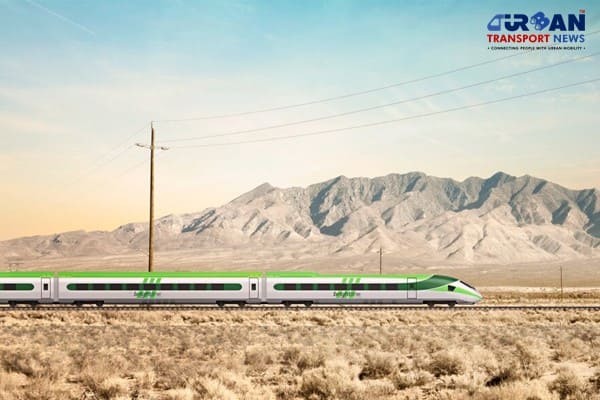 Qatar approves Saudi Rail Link Agreement, Accelerating Gulf Railway Vision 2030
Qatar approves Saudi Rail Link Agreement, Accelerating Gulf Railway Vision 2030 UP Govt plans to introduce Water Metro services in Ayodhya, Varanasi & Prayagraj
UP Govt plans to introduce Water Metro services in Ayodhya, Varanasi & Prayagraj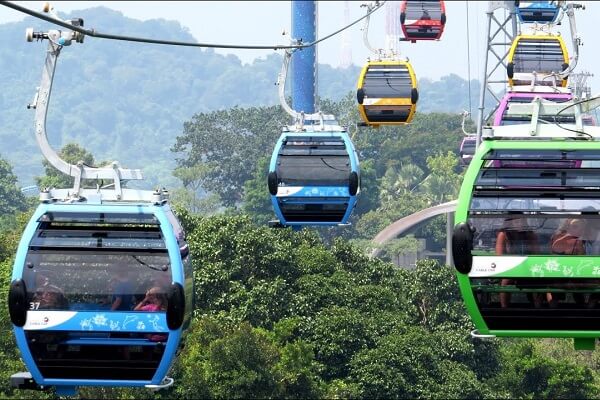 India’s First Urban Ropeway begins Trial Run in Varanasi, Set to carry 1 Lakh passengers daily
India’s First Urban Ropeway begins Trial Run in Varanasi, Set to carry 1 Lakh passengers daily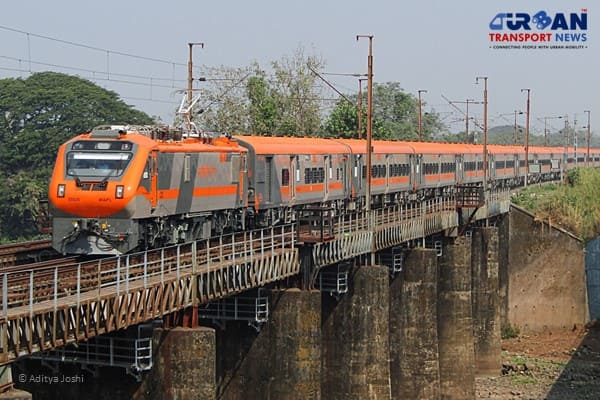 India and Bhutan to Build First-Ever Rail Link: ₹4,033 Cr Project to Boost Regional Connectivity
India and Bhutan to Build First-Ever Rail Link: ₹4,033 Cr Project to Boost Regional Connectivity Patna to launch Eco-Friendly Water Metro; Trial Run soon between Digha and Kangan Ghats
Patna to launch Eco-Friendly Water Metro; Trial Run soon between Digha and Kangan Ghats Air India Group set to launch Flights Operations from Navi Mumbai International Airport
Air India Group set to launch Flights Operations from Navi Mumbai International Airport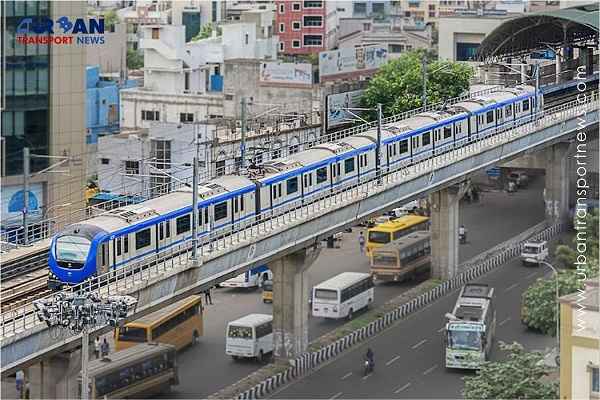 Chennai to launch 25-Year Mobility Plan with Unified QR Ticketing and One-App Transit System
Chennai to launch 25-Year Mobility Plan with Unified QR Ticketing and One-App Transit System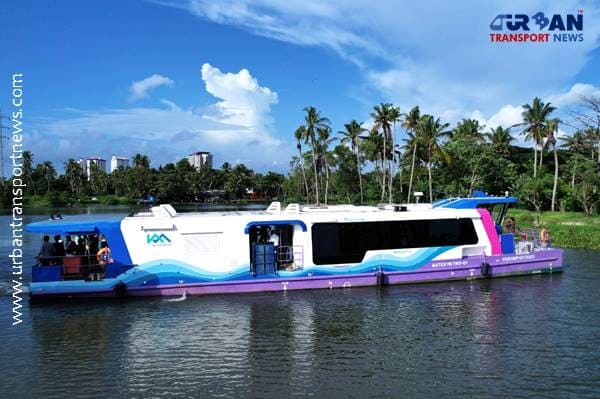 Kochi Metro bags ₹4.4 crore contract to prepare DPR for Mumbai Water Metro Proejct
Kochi Metro bags ₹4.4 crore contract to prepare DPR for Mumbai Water Metro Proejct Navi Mumbai International Airport set for September launch; IndiGo and Akasa Air to lead Operations
Navi Mumbai International Airport set for September launch; IndiGo and Akasa Air to lead Operations Noida International Airport to be Inaugurated on October 30, Commercial Flights in 45 Days
Noida International Airport to be Inaugurated on October 30, Commercial Flights in 45 Days
How Japanese trains are most efficient and always on time?
Unveiling the secrets behind the World's most efficient Public Transportation System
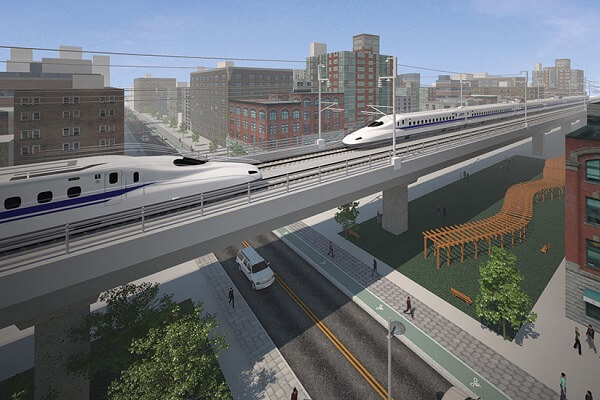
Japan’s public transportation system, particularly its trains, has earned global recognition for its unparalleled punctuality, efficiency, and reliability. From the sleek Shinkansen bullet trains to the intricate subway systems of Tokyo, Japan's rail network stands as a model of innovation and excellence. For many visitors, riding the Shinkansen is as much a part of the experience as the destinations themselves. But what makes Japan's train system so extraordinarily effective? Let's explore the critical factors that contribute to the country's world-renowned rail system.
A Legacy of Excellence: The History of Japanese Trains
Japan’s train system has a rich history that dates back to the late 19th century. The first Japanese railway line opened in 1872, connecting Tokyo’s Shimbashi Station to Yokohama, marking the beginning of Japan’s industrialization. This early step toward modern transportation was inspired by Western technology, particularly from Britain, and laid the foundation for the nation’s future rail development.
Over the years, Japan prioritized railway expansion, particularly during the Meiji era (1868-1912), in order to connect its sprawling islands and stimulate economic growth. By the early 20th century, private companies joined the railway network, creating a more intricate and widespread rail system. However, the most transformative event in Japan’s rail history came in 1964 with the introduction of the Shinkansen, or bullet train.
The Tōkaidō Shinkansen, which connected Tokyo and Osaka in under four hours, revolutionized rail travel, setting the stage for the fast, efficient network we know today. The introduction of the Shinkansen not only reduced travel times significantly but also positioned Japan as a leader in railway technology. Over the years, the Shinkansen network has expanded, making high-speed rail travel accessible to more parts of the country.
Why Japanese Trains Are So Efficient?
Japan's railway system is a marvel of organization, precision, and technology. So, what makes it tick? Here are the key factors behind Japan’s efficient and punctual train system:
1. Culture of Punctuality
One of the most prominent factors in Japan’s railway efficiency is the country’s deep-rooted culture of punctuality. In Japan, being on time is not just a matter of convenience but a reflection of respect for others. This cultural expectation permeates various aspects of life, from business meetings to train schedules. In fact, Japanese train operators consider even a delay of a few seconds as unacceptable, leading to a level of precision that is unparalleled in most other countries.
This cultural norm is ingrained in the day-to-day operation of the railways. Train staff undergo rigorous training to ensure that trains run to schedule, and even minor disruptions are met with quick and effective solutions. When delays do occur, train companies publicly apologize, no matter how small the inconvenience, which reflects their commitment to their passengers' time.
2. Advanced Technology and Infrastructure
Japan’s railways are supported by cutting-edge technology that ensures smooth, on-time operations. The Shinkansen, for instance, operates on a dedicated track system, separating high-speed trains from local and freight trains, which minimizes the risk of delays. In addition, the entire rail system is equipped with advanced signaling and communication systems that allow for real-time monitoring and quick decision-making in the event of unexpected disruptions.
Moreover, the automated train control systems help maintain safe and timely operations by continuously adjusting train speeds based on traffic conditions. The use of predictive maintenance technologies, powered by IoT (Internet of Things) and AI, further enhances the system’s reliability by detecting and addressing potential issues before they lead to delays.
3. Well-Planned Timetables and Coordination
Japan’s rail networks are meticulously planned, with timetables designed to ensure minimal wait times and maximum efficiency. Stations are equipped with highly detailed and regular schedules, allowing for precise coordination across different regions. Local, regional, and long-distance trains are harmonized in such a way that delays in one section of the network do not have a cascading effect on others.
The seamless integration between the Shinkansen and local commuter rail lines further minimizes waiting times and maximizes travel convenience for passengers. The vast majority of Japan's population relies on trains for their daily commute, so the country has invested heavily in ensuring that its rail network runs efficiently to accommodate the needs of its residents.
4. High Standards of Maintenance
Regular maintenance is key to keeping Japan’s trains in peak operating condition. Japan's railway companies adhere to a strict schedule of inspections, ensuring that trains and tracks are in top condition. This focus on preventive maintenance is one reason Japan’s trains rarely experience major mechanical failures, even on its busiest routes.
Trains are meticulously cleaned, checked, and repaired at regular intervals to ensure they are always ready for service. Even platforms, stations, and ticketing systems are maintained with the same level of precision and cleanliness, contributing to the overall sense of order and reliability.
How Japan Deals with Disruptions?
Despite the rigor in planning and operation, disruptions in Japan’s rail network are inevitable, particularly when faced with challenges like natural disasters or human error. Earthquakes, typhoons, and heavy snow can sometimes halt train services, and even small accidents can cause delays.
However, Japan’s rail system is equipped with multiple layers of contingency plans to minimize the impact of disruptions. In the event of an emergency, the system's real-time monitoring allows operators to quickly implement changes, reroute trains, or shut down certain lines for safety. Passengers are kept informed through in-station displays, mobile apps, and announcements, ensuring that they can plan their travel accordingly.
In addition, Japan's rail operators have an apology culture, where even the slightest delay is met with public apologies. This may seem excessive in some cultures, but it demonstrates how seriously Japan takes its commitment to punctuality and customer service.
Innovations in Japanese Rail Travel
Japan’s commitment to technological innovation ensures that the future of its railway network will be just as efficient as its past. A prime example of this is the upcoming Maglev (magnetic levitation) train, which is set to revolutionize travel along the Chūō Shinkansen line between Tokyo, Nagoya, and Osaka. The Maglev train, which uses superconducting magnets to levitate above the track, will reach speeds of up to 500 km/h, significantly reducing travel time between the three cities.
In addition to Maglev technology, Japan is also focusing on sustainability by investing in energy-efficient trains and renewable energy sources. The introduction of regenerative braking systems, which capture and reuse energy, will further reduce the carbon footprint of rail travel. Real-time passenger data and smart transportation systems will optimize train schedules, improve passenger comfort, and reduce traffic congestion in metropolitan areas.
Japan’s dedication to integrating automated train operations, AI, and IoT technologies will further enhance the precision and reliability of its rail services, making the country’s rail network not only the most efficient in the world but also one of the most forward-looking.
A Global Benchmark in Public Transportation
Japan’s train system is a shining example of how a well-organized, technology-driven approach to public transportation can transform the daily commute and become an iconic part of a country’s infrastructure. With a rich history, a culture of punctuality, and constant innovation, Japan’s trains are more than just a mode of transport—they are a testament to what is possible when a country prioritizes efficiency, precision, and sustainability. As Japan looks to the future with even faster and greener rail solutions, it will undoubtedly continue to lead the world in railway excellence.




